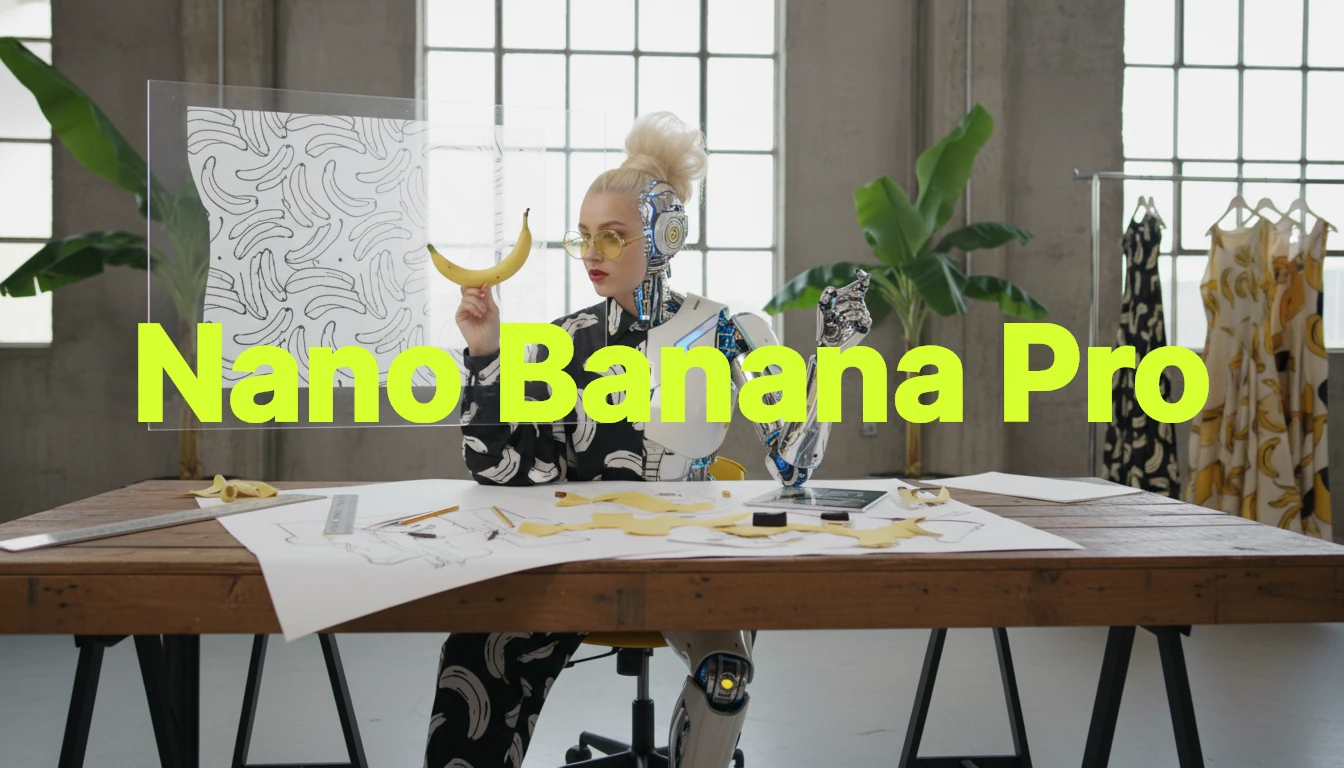
The world of artificial intelligence is moving at a breakneck pace, and Anthropic is consistently at the forefront of this innovation. With the release of their Claude 4.5 model family, they’ve presented us with two incredibly powerful tools: Claude Sonnet 4.5 and Claude Opus 4.5. At first glance, they might seem similar, both hailing from the same cutting-edge architecture. But as I’ve dug into the documentation, run my own tests, and spoken with fellow developers, I’ve found that the differences between them are significant and have major implications for your projects, budget, and results.
You’re likely here because you’re facing a critical decision: which model should you build your next application on? Which one offers the best balance of power and price for your business? Is the premium performance of Opus 4.5 worth the extra cost, or can the impressively capable Sonnet 4.5 handle your workload with flying colors?
This is more than just a spec sheet comparison. This is a practical guide designed to help you navigate that choice. We’ll break down the core strengths of each model, dive deep into performance benchmarks, analyze the crucial cost-per-token difference, and outline specific, real-world use cases. By the end of this article, you’ll have a clear understanding of the Claude Opus 4.5 vs Sonnet 4.5 debate and be equipped to choose the perfect AI partner for your needs.
Claude Opus 4.5 vs Sonnet 4.5 Quick Verdict
Before we dive into the nitty-gritty details, let’s start with a high-level overview. If you need a quick answer, this table breaks down the essential differences between the two models.
| Feature | Claude Sonnet 4.5 | Claude Opus 4.5 |
|---|---|---|
| Best For | High-throughput, scaled AI applications, content creation, data processing, and enterprise workloads where speed and cost are critical. | Complex reasoning, R&D, advanced code generation, strategic analysis, and mission-critical tasks requiring peak intelligence. |
| Key Strength | An exceptional balance of high intelligence, speed, and affordability. The “workhorse” model. | State-of-the-art, “frontier” intelligence that pushes the boundaries of what AI can do. The “flagship” model. |
| Performance | Near-Opus level intelligence, excelling in coding, agents, and computer use. A huge leap over previous Sonnet models. | The absolute pinnacle of AI performance, setting new records on benchmarks like SWE-bench for real-world software engineering. |
| Speed | Significantly faster than Opus 4.5, making it ideal for real-time applications and user-facing features. | Slower than Sonnet 4.5 due to its larger size and more complex computational requirements. |
| Cost (per million tokens) | $3 (Input) / $15 (Output) | $5 (Input) / $25 (Output) |
| Context Window | 200,000 tokens | 200,000 tokens |
| Output Limit | 64,000 tokens | 64,000 tokens |
| Knowledge Cutoff | January 2025 | March 2025 |
The Bottom Line: Choose Claude Sonnet 4.5 when you need a smart, fast, and cost-effective model for the majority of your tasks. Choose Claude Opus 4.5 when you require the absolute best performance for your most complex and demanding challenges, and budget is a secondary concern.
What’s New in the Claude 4.5 Family? A Shared Foundation
Before we pit them against each other, it’s important to recognize that both Sonnet 4.5 and Opus 4.5 are built on the same groundbreaking Claude 4.5 architecture. This means they share a set of powerful foundational capabilities that represent a major leap forward for the Claude family.
Vision and Image Analysis
Both models possess sophisticated vision capabilities. They can analyze and interpret complex images, charts, graphs, and technical diagrams with remarkable accuracy. This isn’t just about identifying objects; it’s about understanding context. You can upload a screenshot of a user interface and ask for the corresponding code, or provide a complex financial chart and request a detailed analysis of the trends. This multi-modal strength is a core feature of the entire 4.5 generation.
Massive Context and Output Windows
A standout feature for both models is the massive 200,000 token context window and a generous 64,000 token output limit. This allows them to process and reason over enormous amounts of information in a single prompt. You can feed them entire codebases, lengthy research papers, or detailed financial reports and expect a coherent, context-aware response. This shared feature makes both models incredibly powerful for tasks involving deep research and large-scale document analysis.
Enhanced Tool Use and Agentic Behavior
Anthropic has heavily invested in making the 4.5 models excellent “agents” that can interact with external tools and APIs. Both Sonnet and Opus are more reliable at following complex, multi-step instructions and using tools you provide. This unlocks the ability to build sophisticated AI agents that can perform actions like booking appointments, querying databases, or automating workflows, moving beyond simple text generation to active task completion.
Performance Deep Dive: Where Opus 4.5 Pulls Ahead
While Sonnet 4.5 is a powerhouse in its own right, Opus 4.5 is specifically engineered to be the “state-of-the-art” model. This is where the primary distinction lies: Opus 4.5 represents the absolute frontier of Anthropic’s research and development.
Unmatched Coding and Software Engineering Prowess
Anthropic has made bold claims about the coding abilities of the 4.5 family, calling Sonnet 4.5 the “best coding model in the world” upon its release. Just a few weeks later, they topped it with Opus 4.5.
According to Anthropic’s official announcement, Claude Opus 4.5 sets a new state-of-the-art record on SWE-bench, a challenging benchmark that tests a model’s ability to resolve real-world software engineering issues from GitHub. This demonstrates that Opus 4.5 doesn’t just write code; it understands complex codebases, debugs intricate problems, and implements solutions like a seasoned developer.
For tasks that involve:
- Architecting complex software systems
- Debugging legacy code
- Optimizing database queries
- Migrating code from one framework to another
Opus 4.5’s superior reasoning and deeper understanding of programming logic will provide more robust and reliable results. Sonnet 4.5 is an excellent co-pilot for everyday coding, but Opus 4.5 is the expert consultant you bring in for the most difficult engineering challenges.
Deeper Reasoning and Strategic Analysis
The “intelligence” of an LLM is often measured by its ability to handle nuance, ambiguity, and multi-layered reasoning. This is where Opus 4.5 truly shines. When faced with complex problems that require strategic thinking—like analyzing market trends, forecasting business outcomes, or navigating complex legal documents—Opus 4.5 demonstrates a more profound level of comprehension.
I’ve found that when I give both models the same complex business problem, Sonnet 4.5 provides a very good, well-structured answer. However, Opus 4.5 often identifies subtle connections, considers second-order effects, and proposes more innovative strategies that I hadn’t thought of. It’s the difference between a smart analyst and a seasoned strategist.
The Deciding Factor: Speed vs. Cost
For many developers and businesses, the decision between Claude Opus 4.5 and Sonnet 4.5 will ultimately come down to the crucial balance of speed and cost. This is where the models are most clearly differentiated.
Sonnet 4.5: Built for Speed and Scale
**Claude Sonnet 4.5 **is significantly faster than Opus 4.5. This isn’t a minor difference; it’s a core design principle. Sonnet is optimized for high-throughput scenarios where low latency is critical.
Think about applications like:
- Customer-facing chatbots: Users expect instant responses. The speed of Sonnet 4.5 ensures a smooth, natural conversational experience.
- Real-time data classification: Processing and categorizing streaming data requires a model that can keep up without creating a bottleneck.
- Content generation at scale: If your business needs to produce hundreds of product descriptions or marketing emails per day, Sonnet’s speed and lower cost make it the only logical choice.
The Cost Equation: Unpacking the Numbers
Let’s break down the pricing. The numbers might seem small, but they add up incredibly fast when you’re processing millions of tokens a day.
- Claude Sonnet 4.5: $3 per million input tokens / $15 per million output tokens
- Claude Opus 4.5: $5 per million input tokens / $25 per million output tokens
This means Opus 4.5 is 67% more expensive for input tokens and 67% more expensive for output tokens compared to Sonnet 4.5.
Let’s imagine you’re building a document summarization service that processes 100 documents a day. Each document has 10,000 tokens of input and generates a 1,000-token summary.
-
Daily Cost with Sonnet 4.5:
-
Input: (100 docs *10,000 tokens) *($3 / 1,000,000) = $3.00
-
Output: (100 docs *1,000 tokens) *($15 / 1,000,000) = $1.50
-
Total: $4.50 per day
-
Daily Cost with Opus 4.5:
-
Input: (100 docs *10,000 tokens) *($5 / 1,000,000) = $5.00
-
Output: (100 docs *1,000 tokens) *($25 / 1,000,000) = $2.50
-
Total: $7.50 per day
Over a month, that’s a difference of $90 ($135 vs. $225). Now, scale that up to thousands of documents or millions of user interactions, and you can see how Sonnet 4.5 becomes the clear choice for scalable, cost-sensitive applications.
Practical Use Cases: When to Choose Opus vs. Sonnet
Theory is great, but let’s get practical. Here’s a breakdown of real-world scenarios and my recommendation for which model to use.
Choose Claude Sonnet 4.5 For:
- Enterprise-Scale Data Processing: When you need to summarize, classify, or extract information from vast quantities of documents, Sonnet’s speed and cost-effectiveness are unbeatable. Think of processing customer support tickets, analyzing feedback forms, or enriching data in a pipeline.
- Interactive Chatbots and Virtual Assistants: For any user-facing application where response time is key, Sonnet provides a high-quality conversational experience without frustrating delays.
- Content Marketing and SEO: Generating blog posts, social media updates, product descriptions, and marketing copy at scale is a perfect job for Sonnet. Its intelligence is more than sufficient for these creative tasks.
- Standard Code Generation: For everyday coding tasks like writing functions, generating boilerplate code, creating unit tests, or acting as a programming assistant in your IDE, Sonnet 4.5 is a fast and highly capable partner.
Choose Claude Opus 4.5 For:
- Scientific Research and Development (R&D): When you’re working on the cutting edge of science or technology, you need an AI that can understand complex research papers, hypothesize novel solutions, and analyze dense technical data. Opus’s superior reasoning is a must-have.
- Complex Financial and Legal Analysis: Tasks that require deep, nuanced understanding of intricate systems—like analyzing financial models, reviewing complex contracts for loopholes, or generating strategic market forecasts—demand the peak intelligence of Opus 4.5.
- Mission-Critical Software Architecture: When you are designing the core logic for a new application, debugging a system-wide failure, or performing a complex code refactor, Opus’s state-of-the-art coding abilities can prevent costly errors and lead to a more robust final product.
- Building Advanced AI Tutors or Mentors: For applications that need to explain complex topics with depth and accuracy, adapting to a user’s level of understanding, Opus can provide a richer, more insightful educational experience.
The Hybrid Approach: Getting the Best of Both Worlds
You don’t have to choose just one model. One of the most powerful strategies I’ve seen implemented is a hybrid, multi-agent approach. This involves using different models for different stages of a task, optimizing for both cost and quality.
Imagine building an AI research assistant:
- Initial Triage (Sonnet 4.5): A user submits a broad research query. You use the fast and inexpensive Sonnet 4.5 to perform an initial scan of dozens of documents, quickly identifying the most relevant sources and filtering out the noise.
- Deep Analysis (Opus 4.5): Once the top 3-5 most relevant documents are identified, you pass them to Opus 4.5. You leverage its superior intelligence to perform a deep, synthesized analysis, drawing connections between the sources and generating novel insights.
- Final Report Generation (Sonnet 4.5): The synthesized insights from Opus are then handed back to Sonnet 4.5 to be formatted into a clean, well-structured, and user-friendly report.
This tiered approach allows you to use the expensive, slower model only for the part of the task that truly requires its frontier intelligence, while using the faster, cheaper model for the bulk of the processing. This is how you build sophisticated, cost-effective AI systems.
Final Verdict: Your AI Strategy Starts Here
The Claude Opus 4.5 vs Sonnet 4.5 decision isn’t about which model is “better” in a vacuum; it’s about which model is the right tool for the job at hand.
Anthropic has given us a fantastic choice. With Claude Sonnet 4.5, we have an intelligent, incredibly fast, and economical model that will likely become the default choice for 90% of AI applications. It’s the dependable workhorse that can power the next generation of AI-driven products at scale.
With Claude Opus 4.5, we have a glimpse into the future. It’s the brilliant, strategic mind you consult for your most challenging problems. It’s a tool for innovation, research, and solving problems that were previously out of reach.
My advice is to start with Sonnet 4.5. Test its limits, see how it performs on your specific tasks, and appreciate its speed and efficiency. For most use cases, you’ll be thrilled with the results. But keep Opus 4.5 in your back pocket. When you hit a wall, when the problem gets too complex, or when you need a truly groundbreaking insight, that’s the time to call in the flagship. By understanding the unique strengths of both, you can build a more intelligent, efficient, and powerful AI strategy.
Frequently Asked Questions (FAQ)
Is Opus 4.5 always better than Sonnet 4.5?
Not necessarily. While Opus 4.5 has higher intelligence and performs better on complex reasoning benchmarks, Sonnet 4.5 is significantly faster and more cost-effective. For tasks that require speed and scale, like a customer service chatbot, Sonnet 4.5 is the “better” choice. “Better” depends entirely on your specific use case.
Can I use the same API calls for both models?
Yes, you can easily switch between the models by changing the model name in your API call (e.g., from claude-sonnet-4.5-20250929 to claude-opus-4.5-20251101). This makes it easy to experiment and even implement a hybrid approach where you choose the model dynamically based on task complexity.
Do both models have the same safety features?
Yes, both Sonnet 4.5 and Opus 4.5 are built with Anthropic’s industry-leading safety research at their core. They are designed to be helpful, harmless, and honest, with robust guardrails against misuse. Opus 4.5, as the frontier model, undergoes even more rigorous safety testing and alignment.
How does the knowledge cutoff date affect the models?
Opus 4.5 has a slightly more recent knowledge cutoff (March 2025) than Sonnet 4.5 (January 2025). This means Opus will have knowledge of events, data, and code libraries that appeared in that two-month gap. For most tasks, this difference is negligible, but for topics related to very recent events or technology, Opus may have a slight edge.
For a startup on a tight budget, which model should I choose?
For a startup, Claude Sonnet 4.5 is almost always the right place to start. Its powerful capabilities are more than enough for developing a minimum viable product (MVP) and serving initial users. Its lower cost and higher speed will allow you to iterate faster and manage your burn rate effectively. You can always offer a premium, Opus-powered feature later as your business grows.

